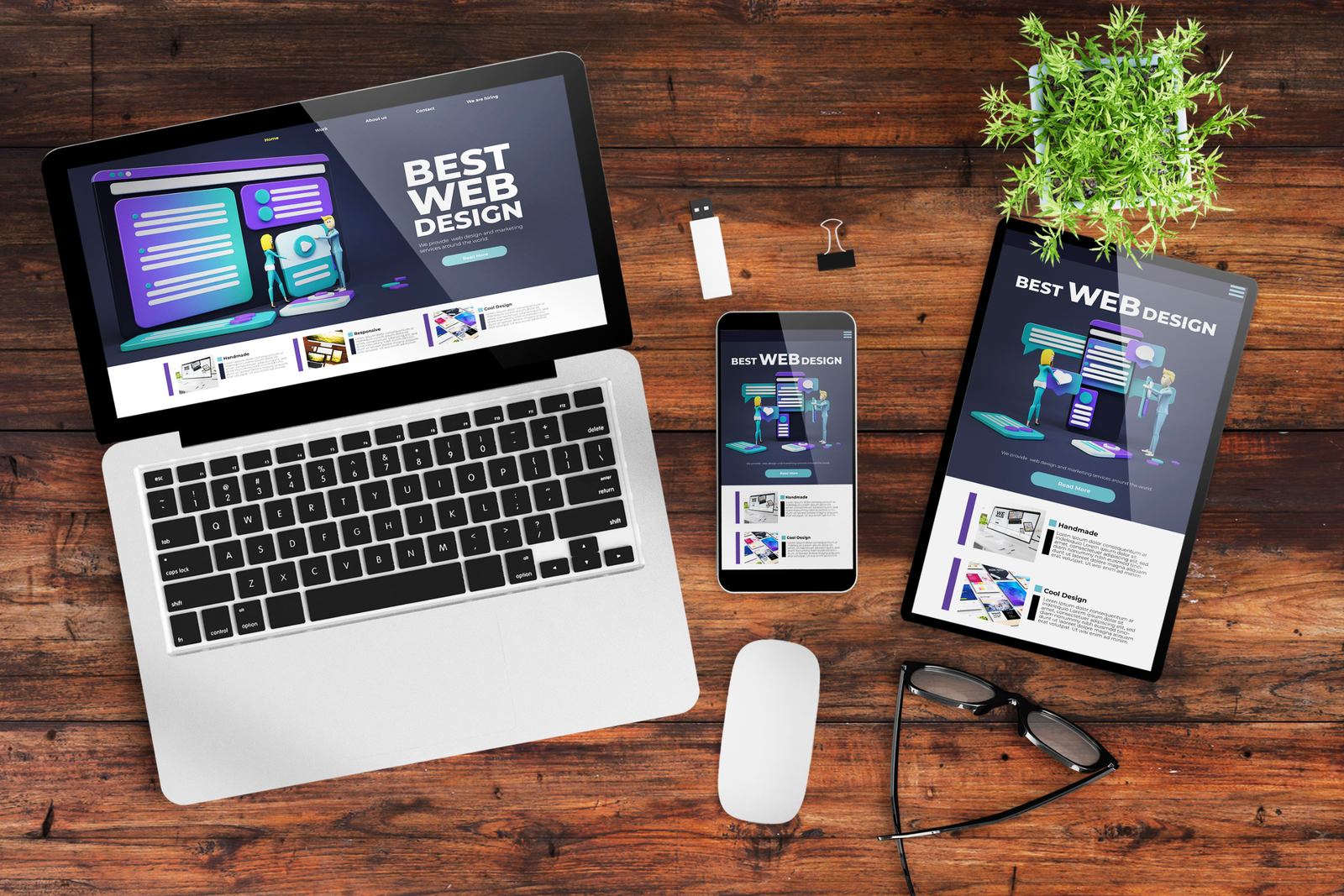We Guarantee 100% Security of Your Provided Information
Filled information is only used to contact you for further assistance. We are not going to spam or sell your personal data to anyone.

In the age of smartphones and tablets, having a mobile-friendly website is no longer a luxury; it’s a necessity. With the majority of internet traffic coming from mobile devices, ensuring that your WordPress website development is responsive is crucial for providing a seamless user experience and maximizing engagement.
Ensuring that your WordPress website development is Mobile Compatibility is essential for providing a positive user experience and maximizing engagement on mobile devices.
In this comprehensive guide, we delve into the importance of responsive WordPress website development and design for WordPress websites and provide actionable tips to ensure that your site looks and performs flawlessly across all devices.
Table of Contents
ToggleResponsive WordPress website development and design refers to a web development and designing approach aimed at creating websites that provide an optimal viewing and interaction experience across a wide range of devices and screen sizes, from desktop computers to tablets and smartphones. The primary goal of responsive WordPress website development and design is to ensure that websites adapt and respond fluidly to the device on which they are viewed, without compromising usability or visual appeal.
Responsive website design adapts to various screen sizes and resolutions through a combination of flexible layouts, fluid grids, flexible images, and CSS media queries. Here’s how it works:
Impact on user experience and engagement.
Responsive wesbite design profoundly impacts user experience and engagement by ensuring that websites adapt seamlessly to various devices and screen sizes. With responsive website design, users enjoy a consistent and optimized browsing experience regardless of whether they’re accessing the site on a desktop computer, tablet, or smartphone. This consistency fosters a sense of familiarity and comfort, leading to increased engagement as users navigate through the website’s content effortlessly. Furthermore, responsive website design enhances accessibility, making the website more inclusive to users with diverse devices and preferences.
Influence on search engine rankings (SEO).
Responsive website design significantly influences search engine rankings (SEO) due to its positive impact on user experience and technical aspects. Search engines prioritize mobile-friendly wordpress websites in their search results, aiming to deliver a seamless experience to users across all devices. Responsive wesbite design ensures that websites adapt fluidly to different screen sizes and resolutions, providing a consistent and optimized experience for both desktop and mobile users. This improved user experience leads to lower bounce rates, longer session durations, and higher engagement, all of which are positive signals to search engines.
Catering to the preferences of mobile users.
Responsive website design caters to the preferences of mobile users by ensuring that websites are accessible, usable, and visually appealing across a wide range of mobile devices. With the proliferation of smartphones and tablets, more users are accessing the internet on mobile devices than ever before. Responsive WordPress Website Development design addresses the specific needs and behaviors of mobile users by optimizing website layouts, content, and functionality for smaller screens and touch interactions. This includes using fluid layouts that adapt to different screen sizes, prioritizing essential content and calls-to-action for mobile users, and implementing touch-friendly navigation elements.
When optimizing content for mobile devices in WordPress debsite development stage, prioritizing content hierarchy is crucial for ensuring a positive user experience. Here are some tips for prioritizing content hierarchy for smaller screens:
Responsive plugins are tools designed to optimize the responsiveness of WordPress website development, ensuring that they adapt fluidly to different screen sizes and devices. These plugins help improve user experience, boost mobile compatibility , and enhance overall usability. They often include features such as fluid layouts, flexible images, and mobile-friendly navigation elements.
Examples of popular responsive plugins for WordPress:
Best practices for plugin selection and configuration:
Testing across devices is essential for ensuring cross-device compatibility and delivering a consistent user experience across different screen sizes and devices in WordPress website development. Here’s how testing across devices works, including its importance, tools and techniques, and iterative improvements based on testing feedback:
Importance of cross-device compatibility testing:
Tools and techniques for testing responsiveness:
Iterative improvements based on testing feedback:
Best Practices for Mobile-Friendly WordPress Websites :
Optimizing images and media on your website is crucial for improving performance, reducing load times, and enhancing user experience. Here’s how you can optimize images and media effectively:
Use image compression tools or plugins to reduce the file size of images without significantly sacrificing quality. Popular image compression tools include TinyPNG, JPEG Optimizer, and ImageOptim.
Consider adjusting image dimensions and resolutions to match the display size and resolution of the device. Use responsive images to deliver appropriately sized images based on the user’s screen size and viewport.
Select the most suitable file format for each type of image or media asset. For photographs and images with many colors, use JPEG format for efficient compression and good quality. For images with transparency or text, consider using PNG format.
Use modern image formats like WebP where supported, as they offer better compression and quality compared to older formats like JPEG and PNG. However, ensure graceful fallbacks for browsers that do not support WebP.
Lazy loading delays the loading of offscreen images and media until they are needed, reducing initial page load times and improving performance. Use lazy loading techniques, such as native lazy loading attributes or JavaScript libraries like LazyLoad.js or Intersection Observer API.
Prioritize the loading of visible content above the fold and defer loading of images and media below the fold or outside the viewport. This ensures that critical content is loaded quickly, enhancing user experience.
Prioritizing speed and performance is essential for delivering a seamless user experience and improving website engagement. Here’s how you can achieve this by focusing on minimizing HTTP requests and optimizing code, leveraging caching mechanisms, and implementing responsive website design principles:
1. Minimizing HTTP requests and optimizing code:
2. Leveraging caching mechanisms:
3. Implementing responsive website design principles to enhance speed:
Enhancing navigation for mobile users is crucial for providing a seamless and intuitive browsing experience on smaller screens. Here’s how you can achieve this:
1. Simplifying menu structures for touch navigation:
2. Implementing mobile copatibility navigation patterns (hamburger menu, sticky navigation):
3. Ensuring easy access to key content and calls to action:
Responsive website development and designing is not just about aesthetics; it’s about creating an inclusive and accessible web experience for all users, regardless of the device they use. At Webvision Solution, we specialize in WordPress web development services that prioritize responsiveness and user experience. Contact us today to elevate your WordPress website with cutting-edge responsive website design solutions and ensure that your online presence resonates with your target audience across all devices.

To grow your business & get maximum return on your investment
We Guarantee 100% Security of Your Provided Information
Filled information is only used to contact you for further assistance. We are not going to spam or sell your personal data to anyone.
Address
301, Onyx Business Centre, Sunpharma – Atladra Road, Vadodara, Gujarat
Call Us On
Email Us
Webvision Solution is a trusted IT services provider offering top-rated custom website development, digital marketing, graphic designing, and a range of IT services in the global market. From simple to advanced website development to effective digital marketing and creative graphic designing services, we are here to provide excellent services to fulfil all your IT needs.
Useful Links
All Rights Reserved & Made with ❤️ by Webvision Solution

 Unlocking the Secrets of Effective Content Distribution
Unlocking the Secrets of Effective Content DistributionTo Boost Your Career with Webvision Solution
To Grow Your Career with Webvision Solution